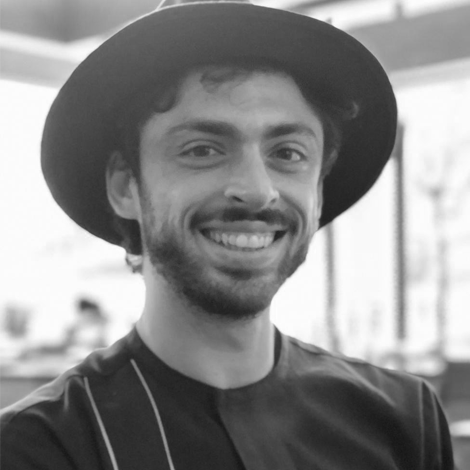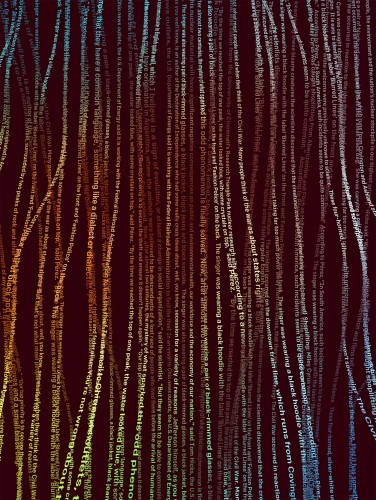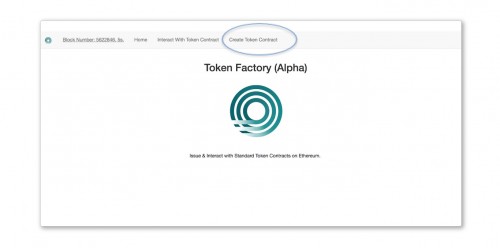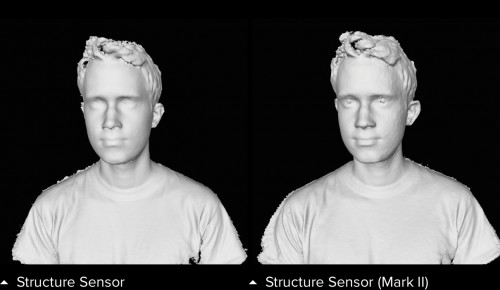Jeremy Kirshbaum, Research Affiliate at IFTF

Cool Tools Show 187: Jeremy Kirshbaum
Our guest this week is Jeremy Kirshbaum. Jeremy is a researcher, strategist, and entrepreneur. He splits his time between West Africa, China, and California, where he is from, partnering with people to build new things, innovate, and explore. He does this through action research, design, and a variety of creative media. He is a proud research affiliate at Institute for the Future, a research affiliate of the Shenzhen Open Innovation Lab, and a research fellow at the Johns Hopkins Immersive Storytelling and Immersive Media Lab and works with large organizations of all kinds to innovate more effectively and imaginatively.
Subscribe to the Cool Tools Show on iTunes | RSS | Transcript | Download MP3 | See all the Cool Tools Show posts on a single page
Show notes:

GPT-2
GPT-2, which is sometimes called transformer, is a AI algorithm that was released by OpenAI. It very realistically mimics human language in a very natural way based on a prompt. I’ve been trying to use it as a front end to research projects because it basically is predicting the next most likely word in a sentence. It’s a little bit like what you and me do when we’re listening to each other, actually. If I’m talking to you, your brain is trying to guess the next thing that I’m going to say and make meaning out of it. You can download it on GitHub, and the link is on the OpenAI website. I downloaded it. The install instructions are really simple to use. It’s pre-trained. You don’t have to do that work. There’s a file in there called developer.md. You open that up, and you follow the instructions. And you’re off and running. You don’t really have to do much in terms of designing or anything like that. And you then put in whatever kind of prompt you want. I’ve found that longer prompts produce higher quality stuff than shorter prompts, and the things it produces are very uneven in the sense that you might have to try two or three or five times before you get something really interesting. I have been using it at the frontend of research projects to help with a kind of hybrid brainstorming and researching. What it will actually be used for is clogging the internet with maliciously intended fake information and gibberish until we choke on it, but I am trying to find something useful for it besides that.

Universal Copy (Google Play App)
I travel to a lot of out of the way places for my work that don’t have English-langauge services even on the internet, and this is a completely indispensable part of my life. It is an app/widget thing that you install on your phone, and it allows you to select and copy any text on the screen, even clickable buttons within apps. So when I am in China and desperately need to order a pizza and 20 fidget spinners to my apartment at 3am, I can navigate Eleme and Taobao using this thing combined with Google or Microsoft translate. I copy the Chinese characters into Google Translate and then look at what the English says. And then type in the English answer and translate it back into Chinese and then put it back into the section.

Token Factory (Jeremy’s how-to article)
This is a great little tool for instantly creating your own cryptocurrency. It takes about 15 minutes and zero computer coding.It’s all UI based, and it does cost about 10 or 15 bucks to deploy the contract onto Ethereum, but it’s cheaper than all of your other automated cryptocurrency creators. And what I mean by deploy a contract is basically publicly listing this line set of code that says, “This is a token. There’s these many tokens in this token set, and there can never be more or less, and they move around according to these rules.” The rules on Token Factory make it automatically compatible with certain Ethereum wallets. You then use Ethereum token to help you move it around. The token is permanent and immutable and relatively indestructible once you create it, but it’s useless until you invent something to do with it. I, for instance, created Jeremy Coin, which is my personal currency. It is pegged to 50,000 Jeremy Coin to four hours of my time, so whatever that’s worth to you. And you can only mine Jeremy Coin by knowing me personally. So the more that I trust you, the more Jeremy Coin you get. And then you could either spend it hiring me to do things, or if you know other people in my network who also value my time, you could just trade with them directly. I would call Jeremy Coin somewhere between a real project and a performance art piece about creating trusted networks or networks that enhance trust instead of trustless networks which I think are a terrible idea.

Occipital Structure Sensor
I make a lot of virtual reality stories and art for fun, love and profit, and the Occipital Structure Sensor is really core to that. It is a 3d scanner that attaches to an iPad. It takes pretty high quality scans if you do it right, but what I love is the artistic way it is imprecise. This interaction of fictional and reality-derived assets is my favorite tension in virtual art right now. You can also put it in robots if you’re into that but for me its an artistic tool. For instance, I made an experience about an area of Shenzhen, the city that I’m now in, called Dafen Oil Painting village, which is this kind of beautiful section of this city where they make about 50% of the commercial art in the world. But it’s outside. It’s beautiful. There’s kids running around. There’s cafes, and they’re mass producing incredible amounts of art, so there’s just piles of art everywhere. And so in China they don’t mind if you awkwardly stand behind them and scan them for eight years while they’re painting. And there’s a trade off with the scanner. Things that move it doesn’t do well with at all. So if something is still, the longer you do it, the better, the clearer it gets. If something is moving, the longer you do it the less clear it gets. And they come out looking really painterly and ghostly. And I think it’s really evocative. I actually think that the imprecision of the tool to me is as important as the precision. Because in art as opposed to science, no one’s sitting around like, “Oh, I’ll get into clay when it’s more efficient and easier to use.” The point of art is much different than the point of science. And the fact that things are hard or are imprecise is as much an asset as a challenge. And so I think that you can hook it up to robots or put it in your self-driving whatever. And I think it is actually meant more for those kind of applications. But I think it’s also perfect for my use as making terrible immersive art that no one looks at.
Also mentioned:
Ansible.group
I am connecting design and production resources in China to talent and projects in Nigeria through Ansible.group, and in general I am trying to create international innovation collaborations with the Nigerian market as a focus. I want to figure out how to get more capital into high potential but illiquid markets like Nigeria in general. Its a big opportunity and I haven’t “solved it” by any means but I’d love to connect with anyone else who has experience or clues related to it. Or if you want to make weird immersive art together I am always down for that.
We have hired professional editors to help create our weekly podcasts and video reviews. So far, Cool Tools listeners have pledged $400 a month. Please consider supporting us on Patreon. We have great rewards for people who contribute! If you would like to make a one-time donation, you can do so using this link: https://paypal.me/cooltools.– MF
08/9/19








